Are you a fan of Spanish recipes but you need something easy, cheap, and quick to make? Then you are in the right place.
In this article, we will focus on the caldo de pescado, one of the most beloved Spanish soup recipes to be created in Southern Spain.
Keep scrolling and learn how to make caldo de pescado step-by-step, with some helpful tips for storing, serving, and ingredient replacements.
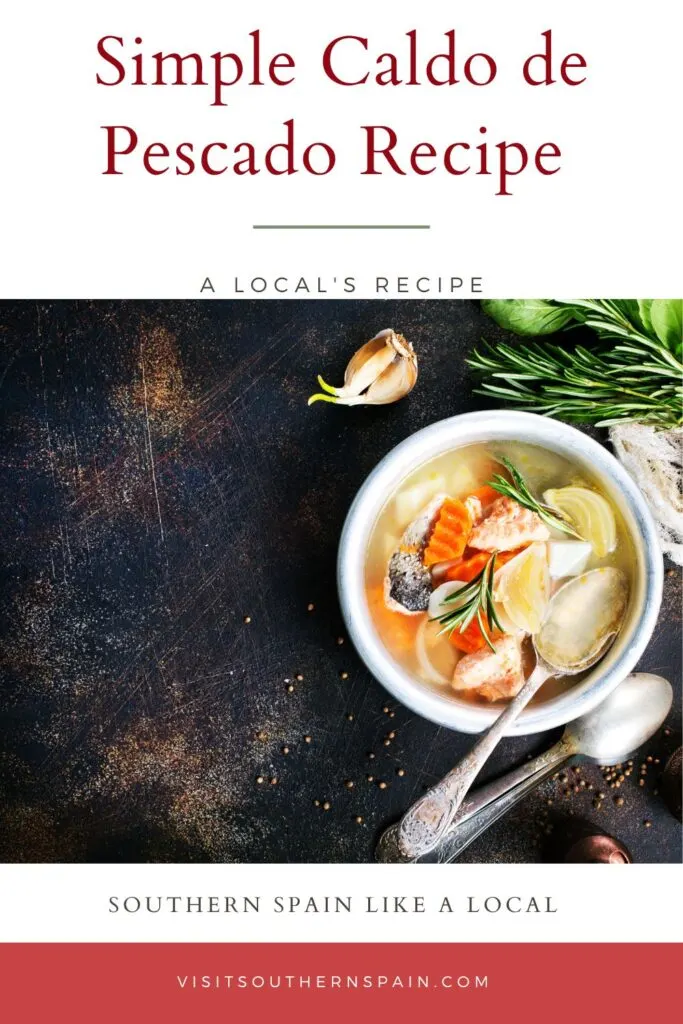
You, dear reader, support this blog. If you purchase through a link, we earn a small commission. As an Amazon Affiliate, we earn from qualifying purchases.
Pssst…!!?? You can’t get enough of Spanish soup recipes? Have a look at my other posts:
Background of the Dish
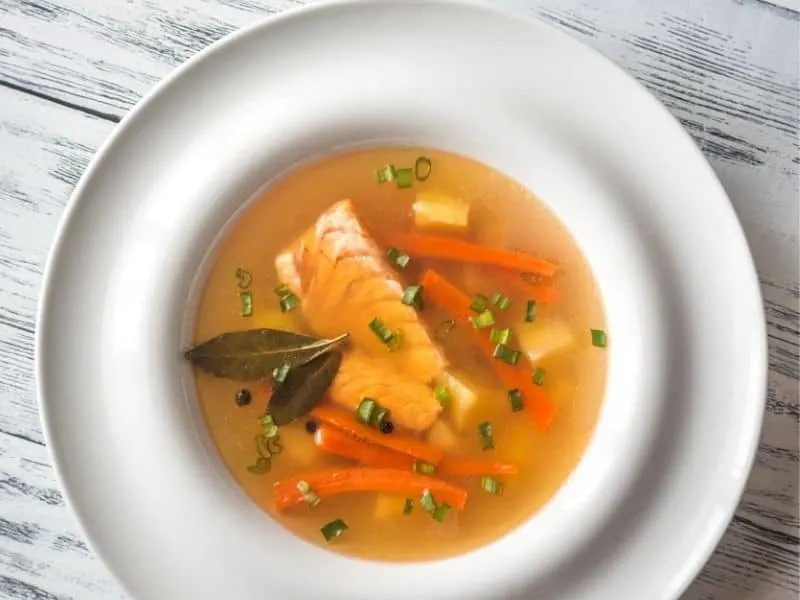
The caldo de pescado is one of the oldest coastal recipes that you can find, as there was a time where it was believed that turning the fish into a soup was the only safe way to eat it.
The original Andalusian caldo de pescado only called for fish, onion, garlic, and water, but as time went by people started adding new components to the mix.
Nowadays the caldo de pescado is as popular as other famous Spanish soup recipes, such as the Spanish ham and bean soup and the Spanish cabbage soup, but it manages to stand out due to its simplicity and warmth.
Pin for later!
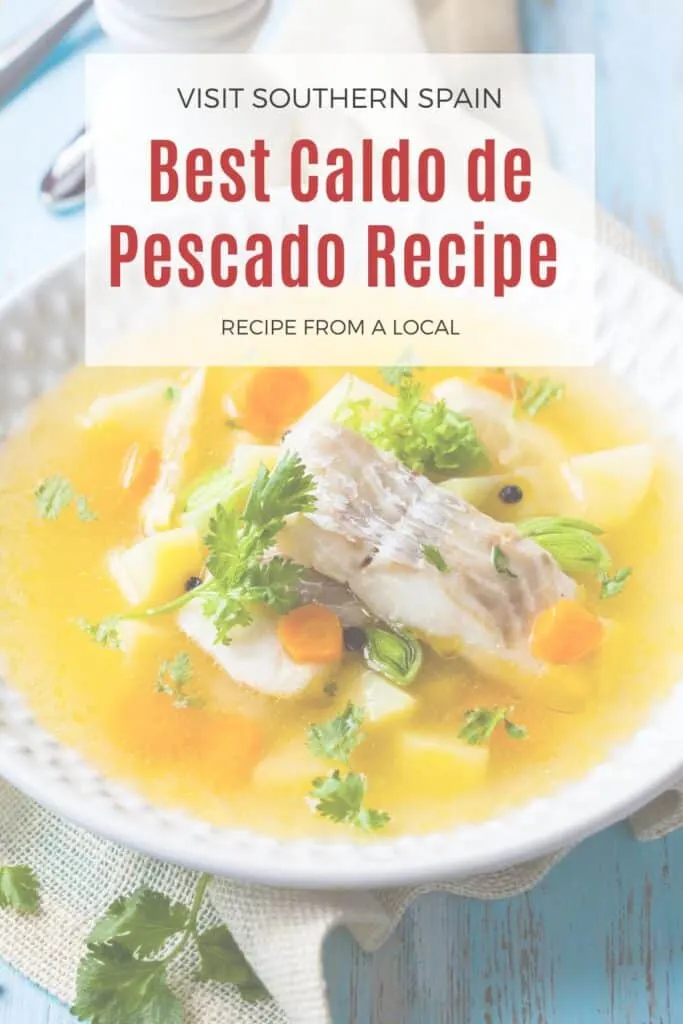
Things You’ll Need for Caldo de Pescado
To make caldo de pescado you need fish (hake, cod, mackerel, etc.), carrots, onion, garlic cloves, water, and some olive oil as the main ingredients.
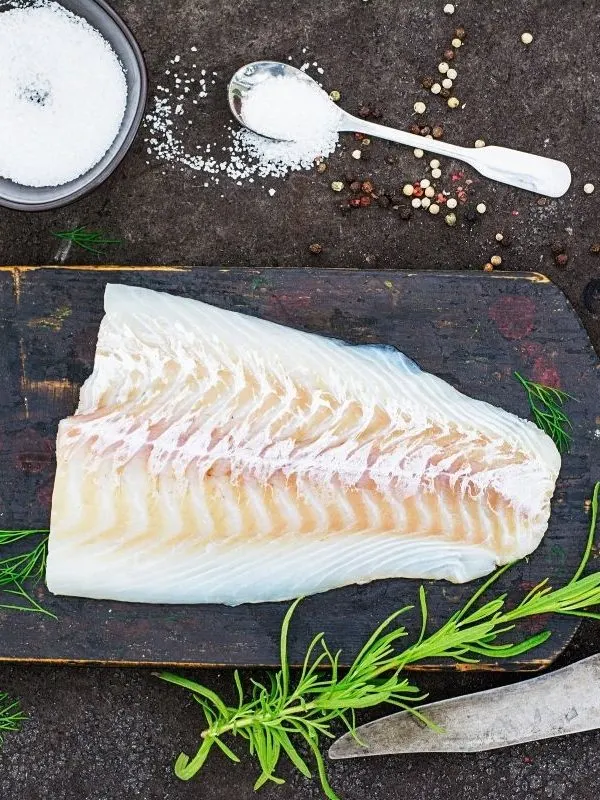
Ingredients
- 8 cups (2l) water
- 700g white fish filets (such as cod or hake)
- Fish heads and bones (optional, for extra flavor)
- 1 onion
- 2 carrots
- 2 stalks of celery
- 3 garlic cloves
- 1 tomato
- 1/2 cup (120ml) white wine (optional)
- A handful of fresh parsley, chopped
- 1 bay leaf
- 1 teaspoon paprika
- Salt and pepper to taste
How to Make Caldo de Pescado – Step by Step Guide
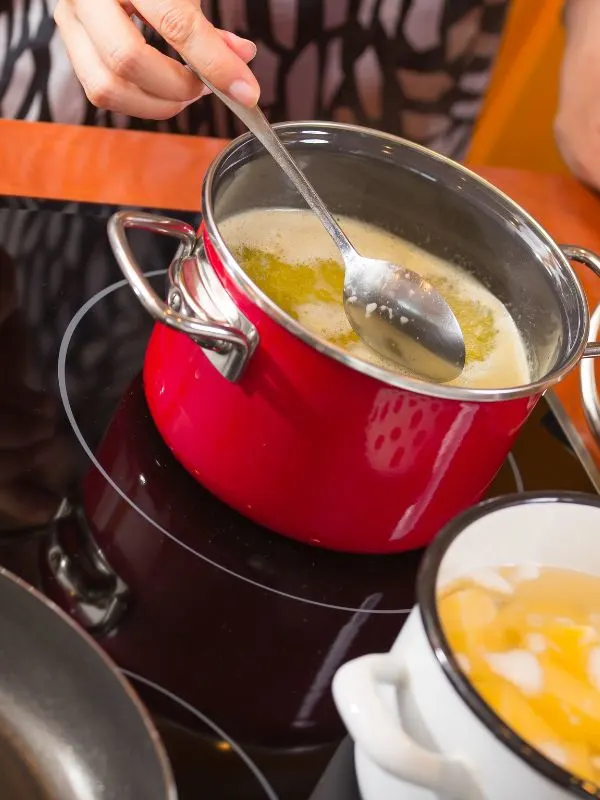
- For the first step in this caldo de pescado recipe, you have to remove the skin from the fish filets and cut it into chunks. If you have fish heads and bones, use them as they add depth of flavor to the broth.
- After that, peel and chop the onion, carrots, tomato, and celery into small pieces. Also, peel and mince the garlic cloves. Feel free to add more vegetables of your choice to the mix.
- Now grab a large pot and heat a bit of olive oil over medium heat. Then, add chopped onions, carrots, and celery. Sauté until the vegetables get soft.
- To continue with this simple soup recipe, add minced garlic to the pot and sauté for a minute until fragrant. Then, add chopped tomatoes and cook for another 3 minutes.
- If you’re using white wine, pour it into the pot and let it simmer for a couple of minutes to cook off the alcohol. It is an optional step but it will add an amazing extra flavor.
- Then, place the fish chunks and fish heads or bones into the pot. Pour in the listed cups of water. Bring the Spanish seafood soup to a boil.
- Now add the chopped parsley, bay leaf, paprika, salt, and pepper to the sopa de pescado. Reduce the heat to low, cover the pot, and let it simmer for about 40 minutes to allow the flavors to meld.
- Once the broth has simmered, strain it to remove the solids, leaving only the clear Spanish fish soup.
- To finish this recipe for Spanish soup you just have to pour the caldo de pescado into bowls and serve it warm.
Substitution of Ingredients
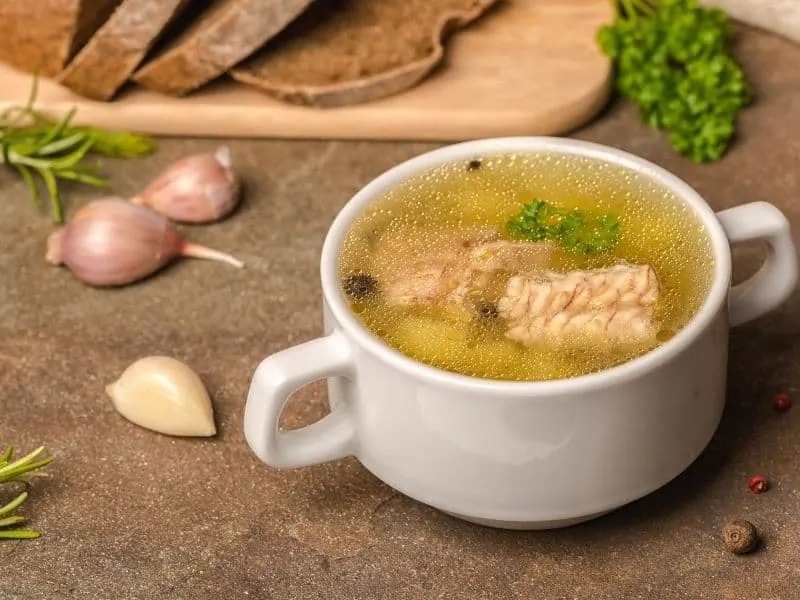
This Spanish fish soup recipe is super easy to customize and adapt to your preferences, so here we will give you some tips to nail it.
You can make caldo de pescado with any type of fish, such as salmon, haddock, sea bream, snook, or try our mackerel soup recipe.
Besides that, you can play a lot with the vegetables for this simple seafood soup recipe: from potatoes, bell peppers, beets, and sweet potatoes, so just use your favorite ones.
To turn it into a simple fish chowder recipe you can replace one cup of water with heavy cream to achieve a creamy consistency, and a tablespoon of flour or cornstarch to thicken it.
Do you have some guests coming over and they don’t like seafood? Feel free to check other of our Spanish soups recipes with different ingredients, such as the Spanish chicken soup with rice and the Spanish white bean soup.
Tips on Serving Caldo de Pescado
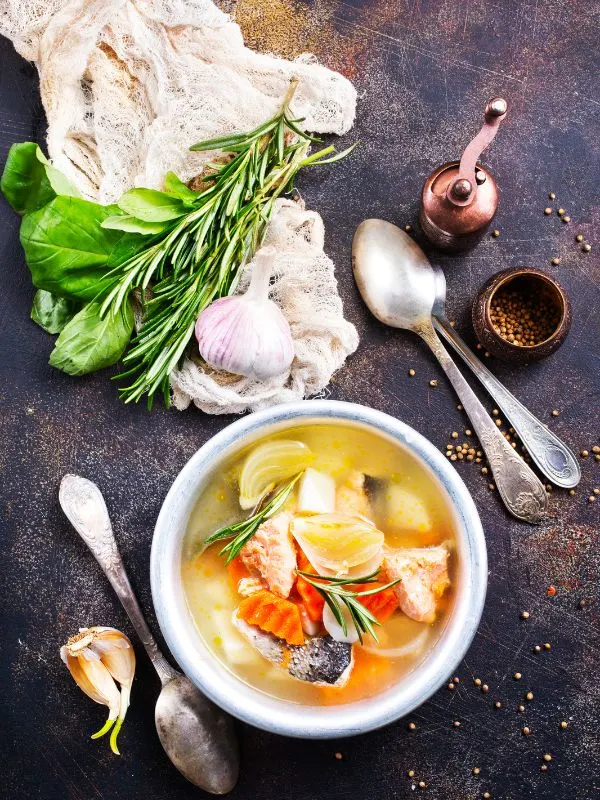
Once you finish preparing the caldo de pescado recipe you will have a fish soup ready to be served as a main dish for lunch or dinner.
Similar to other Spanish fish soup recipes, this caldo is pretty filling on its own, but you can add some extra toppings such as bacon bits, chopped ham, shredded chicken, etc.
You could turn this caldo de pescado into an appetizer, just serve it in smaller bowls and you would have double the amount of portions.
Other Spanish soups that you can prepare for a main dish are the Spanish 5 bean soup recipe and the Spanish black bean soup, which are also great vegan and vegetarian alternatives.
How to Store Caldo de Pescado
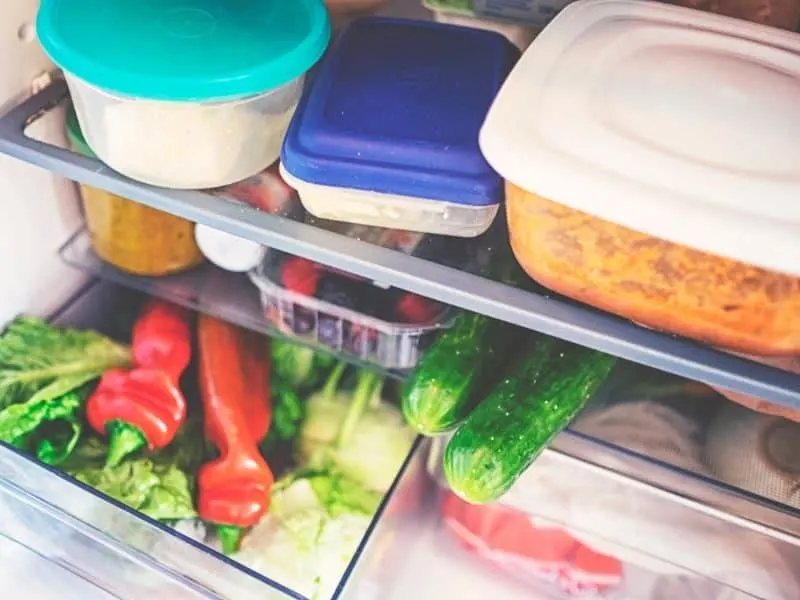
In case you want to store the caldo de pescado for longer we have amazing news for you: you can do it both in the fridge or freezer according to your needs.
In both cases, let the soup cool to room temperature and then place it in a covered container, with plastic wrap on contact with the top of the caldo so that it doesn’t form a crust.
Then, place your soup in the fridge for up to 2 days or in the freezer for up to 35 days and store it just like you would do with the Spanish bean soup or the fish shrimp soup.
You can reheat the caldo de pescado on the stove over medium heat, stirring constantly so it doesn’t burn, but we don’t recommend heating it in the microwave as it will be really hard to get rid of the seafood smell.
Are you a meal-prep fan? Then we have more recipes that you can make and store, such as the Spanish baked bean soup and the black bean and corn soup from Spain.
Recipe Card: Caldo de Pescado
Quick Caldo de Pescado Recipe

Are you a fan of Spanish recipes but you need something easy, cheap, and quick to make? Then you are in the right place.
In this article, we will focus on the caldo de pescado, one of the most beloved Spanish soup recipes to be created in Southern Spain.
Keep scrolling and learn how to make caldo de pescado step-by-step, with some helpful tips for storing, serving, and ingredient replacements.
Ingredients
- 8 cups (2l) water
- 700g white fish filets (such as cod or hake)
- Fish heads and bones (optional, for extra flavor)
- 1 onion
- 2 carrots
- 2 stalks of celery
- 3 garlic cloves
- 1 tomato
- 1/2 cup (120ml) white wine (optional)
- A handful of fresh parsley, chopped
- 1 bay leaf
- 1 teaspoon paprika
- Salt and pepper to taste
Instructions
- Remove the skin from the fish filets and cut it into chunks. If you have fish heads and bones, use them as they add depth of flavor to the broth.
- Peel and chop the onion, carrots, tomato, and celery into small pieces. Peel and mince the garlic cloves.
- In a large pot, heat a bit of olive oil over medium heat. Add chopped onions, carrots, and celery. Sauté until the vegetables get soft.
- Add minced garlic to the pot and sauté for a minute until fragrant. Then, add chopped tomatoes and cook for another 3 minutes.
- If you're using white wine, pour it into the pot and let it simmer for a couple of minutes to cook off the alcohol. It is optional but it adds an amazing extra flavor.
- Place the fish chunks and fish heads or bones into the pot. Pour in the listed cups of water. Bring the Spanish soup to a boil.
- Add chopped parsley, bay leaf, paprika, salt, and pepper to the sopa de pescado. Reduce the heat to low, cover the pot, and let it simmer for about 40 minutes to allow the flavors to meld.
- Once the broth has simmered, strain it to remove the solids, leaving only the clear Spanish fish soup.
- Pour the hot caldo de pescado into bowls and serve it warm.
Notes
We recommend using white meat fish, but you can turn it into a Mackerel soup recipe if you have that type of fish on hand.
Feel free to prepare this Spanish soup recipe with your favorite mix of herbs and spices.
Nutrition Information
Yield
5Serving Size
1Amount Per Serving Calories 317Total Fat 5.3gSaturated Fat 1.2gCholesterol 0mgSodium 97mgCarbohydrates 66.7gFiber 21.4gSugar 6.4gProtein 11.4g
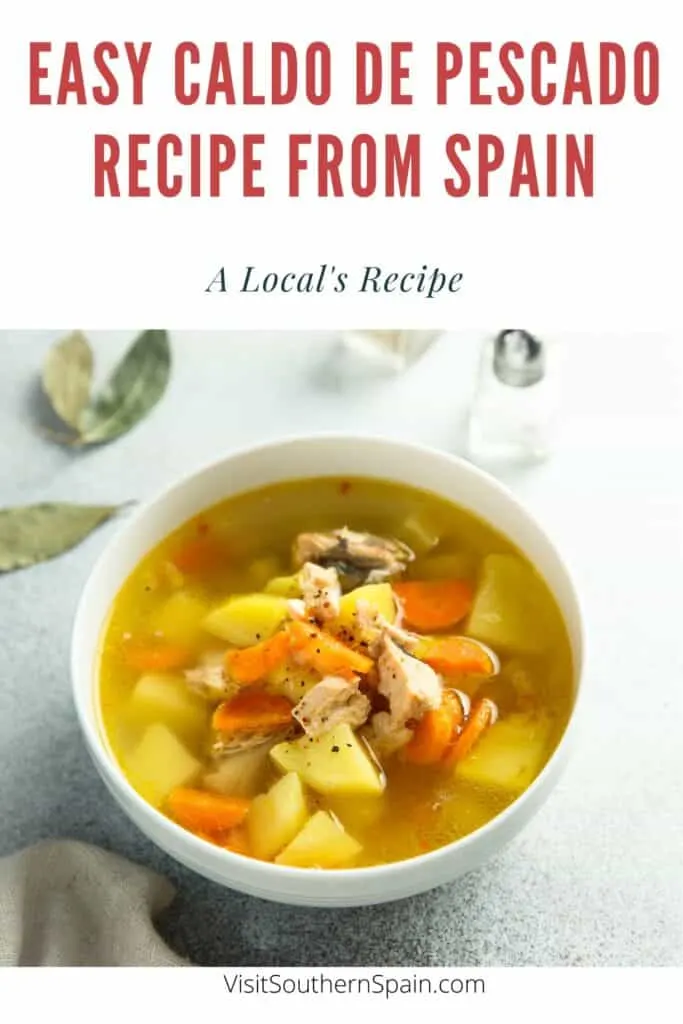
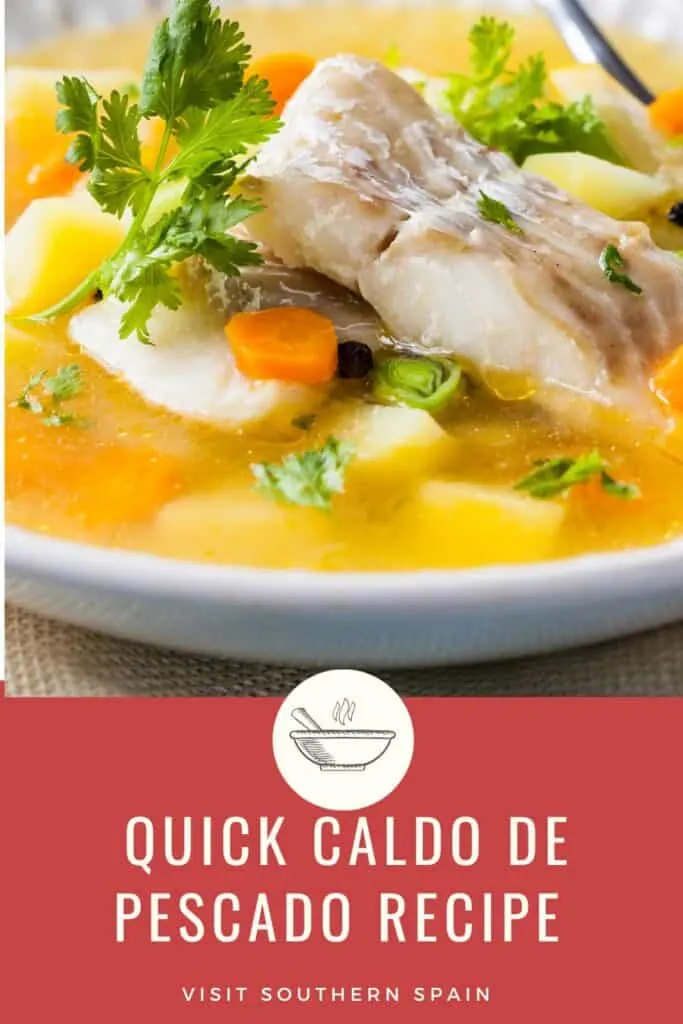

Hola, I’m Paulina! Together with my team, we are passionate about Southern Spain. Here we share all you need to know for great times in Southern Spain with the best places to visit, stay and, of course, the best food to eat.
Let’s dive in and explore Southern Spain’s outdoors, food and culture con pasión!
